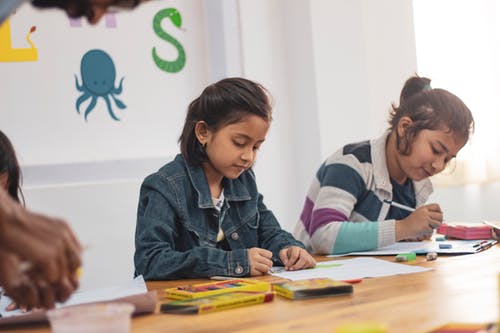By Erin Wyatt a Recent ASU Nutrition Student
For children, the cafeteria is a social setting with a break from classwork and a chance to refuel. Unfortunately for some children, the cafeteria is the only chance to have a proper meal. This opportunity is provided by the National School Lunch Program (NSLP), which supplies children with reduced cost or free food during school hours. But what happens when these kids go home for the evening, over the weekend, or during an extended break? Luckily, different programs and foundations are making sure that these children do not go hungry during after school hours.

The National School Lunch Program enables students to receive lunches, as well as breakfast while attending class. This program provides many benefits to participating children. For one, it reduces the problem of food insecurity for them.1 The term food insecurity is described as being limited on availability and a variety of food options for a healthy diet. Schools can guarantee that a child in this situation will be able to to have a proper breakfast and lunch during school hours. This program also increases the likelihood that children will receive adequate amounts of vitamins and nutrients, therefore improving their overall health.1 Lastly, studies have shown that a fed child is a better student, in terms of grades, as well as behavior.1 When students leave school for the day, many teachers are concerned with the fact that they may not be able to receive sufficient nutrition at home. Thankfully, generous institutions have been popping up all over the country to supplement those children’s nutritional needs.
One such institution in Texas, the Irving Schools Foundation, is offering students bags of food to take home if their family is need of provisions. This “pantry” offers groceries to ensure that these students are able to get nourishment over the weekend, when school meals are not available. Food and preparation is supplied by donations and volunteers. The foundation aspires to implement these types of “pantries” in every school in the area, and to provide each child with hope and stability.2 Another example of a supplemental program is the potential bill that is being proposed in Oklahoma that would allow uneaten food from school cafeterias to be given to students in need. Currently, regulations do not allow the distribution of leftovers, they must be thrown away.3 The passing of this bill would not only provide meals for those students that rely on the school lunch programs for guaranteed nutrition, but also combat food waste.3 It appears that more and more attention is being paid to the importance of childhood nutrition. These examples of different strategies to tackle food insecurity show that innovative measures can and should be taken to succeed to ensure that no child goes hungry.
References:
- Food Research & Action Center. (n.d) Benefits of school lunch. Retrieved from http://www.frac.org/programs/national-school-lunch-program/benefits-school-lunch
- Rogers, B. (2019). Food for thought: Irving middle schoolers won’t go hungry. CBS 11 News. Retrieved from https://dfw.cbslocal.com/2019/03/28/food-for-thought-irving-middle-schoolers-wont-go-hungry/
- Allison, M. (2019). Lawmakers consider bill to give excess food at schools to children in need. KJRH News. Retrieved from https://www.kjrh.com/news/local-news/lawmakers-consider-bill-to-give-excess-food-at-schools-to-children-in-need
Looking for some recipes to make to impress the whole family check out the recipe section. Check out our in season produce section, this helps keep food prices economical.

